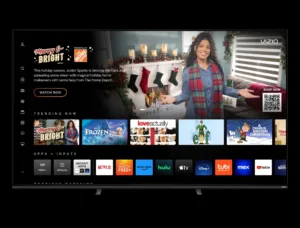Walmart’s strategic acquisition of Vizio for $2.3 billion underscores its ambition to dominate not just the retail but also the smart TV and streaming markets, leveraging advertising as a key revenue stream. By integrating Vizio’s capabilities, Walmart aims to monetize its smart TV sales well beyond the initial point of purchase, capitalizing on Vizio’s position as a media company that masquerades as a TV manufacturer. This move could significantly alter the competitive landscape, especially affecting companies like Roku, whose stock suffered a substantial decline following the announcement, highlighting the market’s concern over Walmart’s potential to prioritize Vizio products and advertising capabilities.
The deal hints at Walmart’s intention to harness the combined power of Vizio’s smart TVs and its own extensive customer data to create a formidable advertising platform. Vizio’s smart TVs, which collect data on viewer habits across cable TV and streaming services, will complement Walmart’s insight into consumer purchasing behavior, enabling highly targeted advertising campaigns. This synergy between viewing data and purchasing data could set a new standard for advertising efficacy in the streaming and retail sectors.
The acquisition raises questions about the future of Vizio’s data business, Inscape, and whether Walmart will continue its operation or shift focus exclusively to leveraging Vizio’s advertising potential. The concern revolves around Walmart’s traditional approach to data privacy and its implications for the broader smart TV and advertising ecosystem, which could see a realignment of ad spending and platform preferences.
Walmart’s purchase of Vizio represents a significant pivot towards creating an advertising nexus that bridges the gap between consumer media consumption and shopping habits, potentially reshaping the smart TV advertising landscape to its advantage. This strategic move not only highlights Walmart’s expansive vision beyond retail but also signals potential challenges for competitors reliant on connected TV and ad revenues in a rapidly evolving market.

